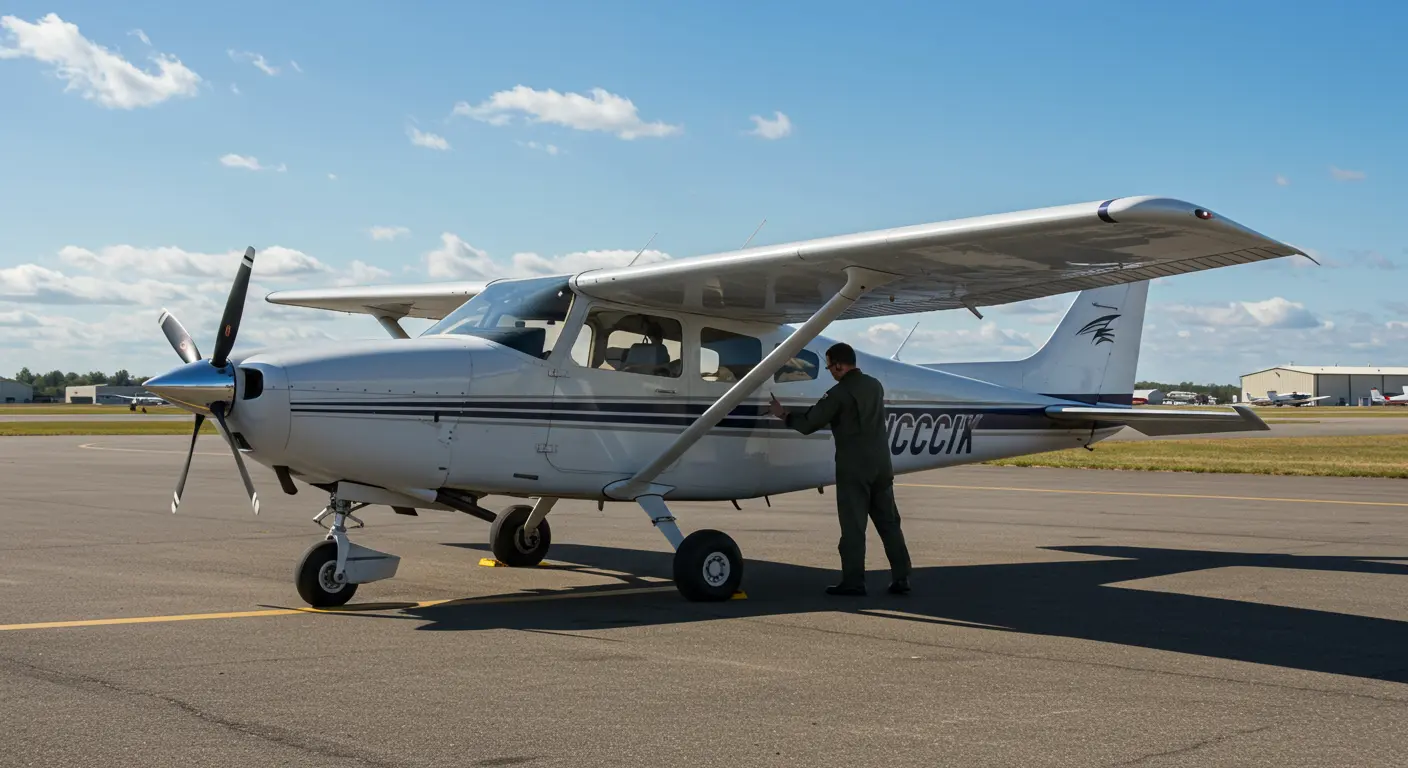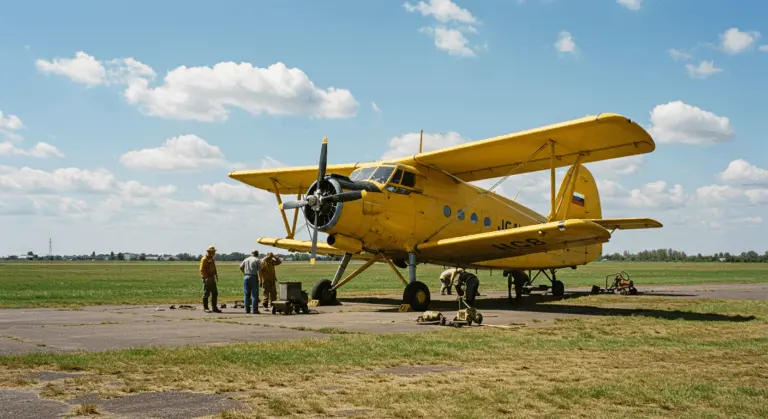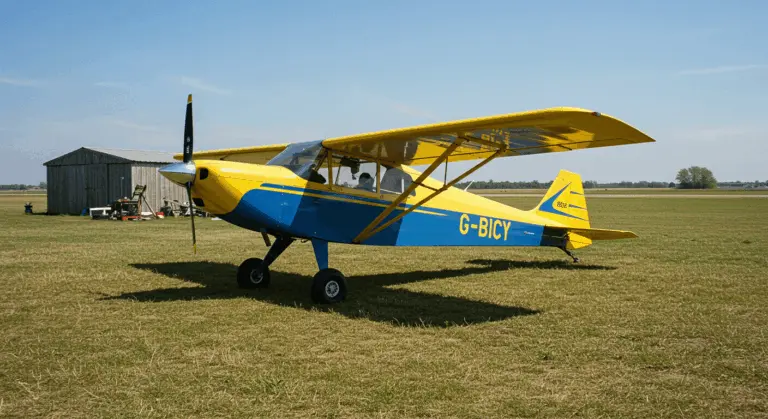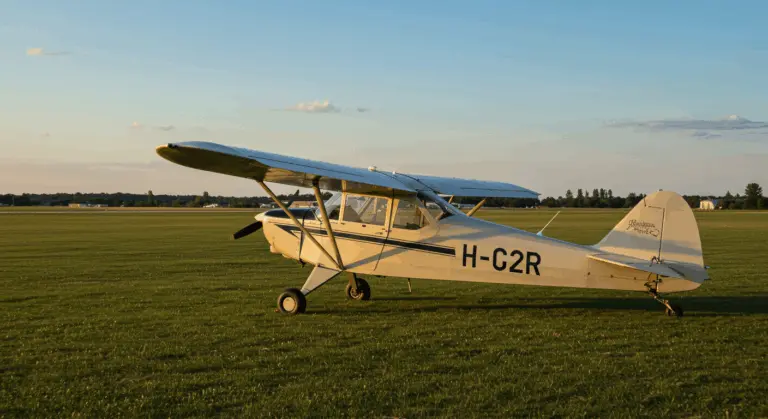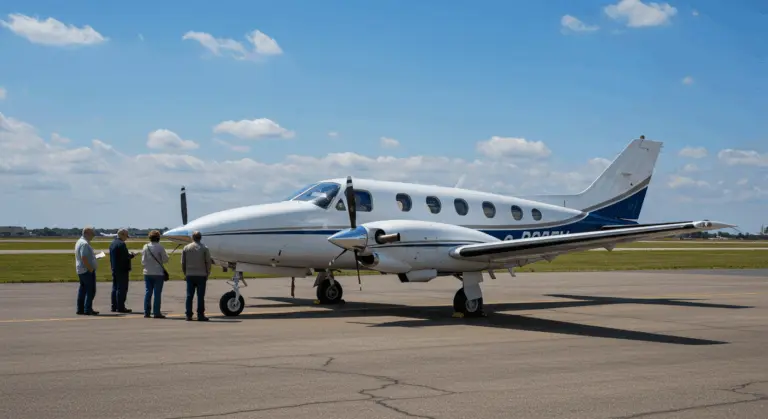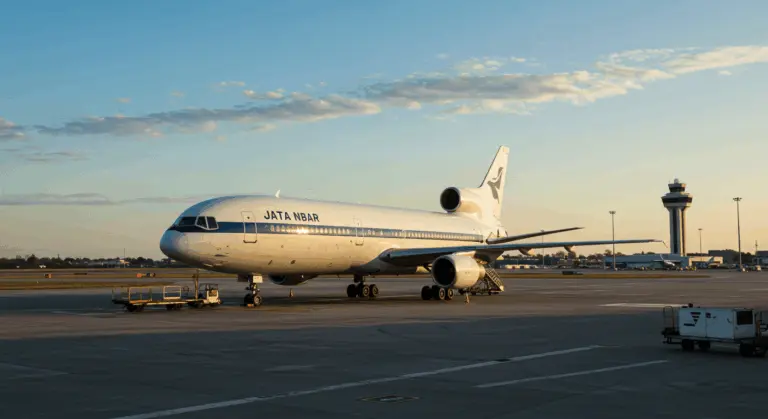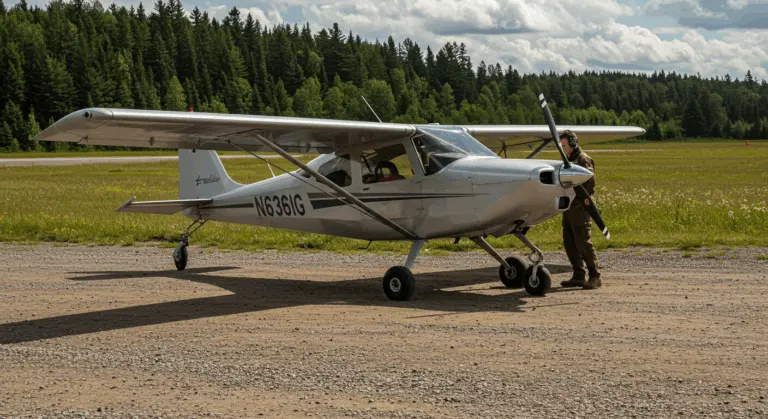V-Tail Bonanza – History, Features, and Safety Overview
History of the V-Tail Bonanza – An Iconic Aircraft
The V-tail Bonanza entered the aviation market in 1947, introducing a distinctive design that would influence general aviation. Beech craft’s aerodynamically refined creation could cruise at an impressive 175 mph powered by a relatively modest 165-horsepower engine—efficiency that was rare for civilian aircraft of that era.
What set apart the Bonanza was its combination of performance and luxury. Where contemporaries cramped passengers into utilitarian spaces, the Bonanza offered a genuinely roomy cabin for four, complete with generous baggage capacity—perfect for both executive travel and weekend getaways. The aircraft’s V-shaped tail was its most distinctive feature, giving it a unique silhouette.
The V-tail design—technically called a ruddervator—replaced the conventional arrangement of vertical and horizontal stabilizers with two surfaces angled at approximately 45 degrees. This innovation reduced weight and drag while maintaining control effectiveness. The Bonanza’s success was immediate. Production ran for 35 years until 1982, making it one of the longest-running aircraft models in aviation history.
During production, the V-tail Bonanza underwent continuous refinement—engine upgrades, structural improvements, enhanced avionics—yet never lost that unmistakable silhouette that pilots could spot from miles away. The aircraft significantly influenced general aviation, as it set new standards for what private pilots could expect in terms of performance, comfort, and style.
Key Features of the V-Tail Bonanza – What Sets It Apart
The iconic V-tail served more than visual appeal—it provided real performance advantages. This “ruddervator” design combined rudder and elevator functions into two elegantly angled surfaces, creating a cleaner profile that helped the Bonanza outpace many contemporaries while reducing both weight and aerodynamic drag.
Beyond its signature tail, the Bonanza featured all-metal construction when many light aircraft still relied on fabric-covered surfaces. This solid construction approach proved beneficial in durability—many V-tail Bonanzas manufactured decades ago continue flying today. The retractable landing gear further set it apart, tucking away cleanly to minimize drag and maximize those impressive cruise speeds.
The cabin design was also innovative. Spacious seating for four came standard, complemented by expansive windows that offered panoramic views. The thoughtfully engineered baggage compartment held substantial amounts of luggage, transforming the aircraft into a practical long-distance traveler. The control layout was intuitive and pilot-friendly, with well-placed instruments and controls that enhanced the flying experience.
Continental engines powered the aircraft, evolving from the original 165-horsepower power plant to increasingly potent variants in later years. This combination of aerodynamic efficiency, structural integrity, and dependable power made the V-tail Bonanza a performance leader in its class.
Safety Concerns – Understanding the Risks of the V-Tail Bonanza
Despite its revolutionary design, the V-tail Bonanza gained a concerning safety reputation that earned it the ominous nickname “forked-tail doctor killer.” This moniker wasn’t entirely fair—it arose partly from the aircraft’s popularity among wealthy professionals who could afford high-performance aircraft but sometimes lacked the experience to handle them safely.
The V-tail design, while aerodynamically brilliant, had structural weaknesses that emerged over time. Early models proved susceptible to in-flight breakups under extreme conditions—particularly when pilots exceeded operating limitations or encountered severe turbulence. Though airworthiness directives and modifications eventually addressed these issues, the damage to the aircraft’s safety reputation lingered.
Statistical analysis shows a concerning pattern: pilot error dominated V-tail accidents, accounting for 73% of crashes. This high percentage highlights an important point—high-performance aircraft demand high-performance pilots. Too many accidents occurred when inexperienced aviators pushed beyond their limits or the aircraft’s certified envelope.
Another safety concern existed in an unusual location: the aircraft’s non-standard landing gear switch. Its unconventional placement confused pilots transitioning from other aircraft, leading to embarrassing gear-up landings or inadvertent retractions on the ground. While later models addressed this quirk, it remained a crucial training point for newcomers.
Design improvements, enhanced pilot training, and greater awareness of operational limits improved many safety issues over time. When flown by properly trained pilots within its performance envelope, the V-tail Bonanza proves both reliable and safe—evidenced by the many examples still gracing skies worldwide.
Variants of the V-Tail Bonanza – Exploring Different Models
-
Model 35 (1947–1982): The original aircraft, featuring the iconic V-tail. Over its 35-year production, it received numerous upgrades (from the original 35 to the V35B) including more powerful engines, structural enhancements, and improved avionics.
-
Model 33 Debonair (1960–1995): Introduced with a conventional tail to address V-tail safety concerns and offer more traditional handling. It was later renamed the Bonanza.
-
Model 36 Bonanza (1968–Present): A stretched version of the Model 33 with a longer fuselage to accommodate six occupants. This larger capacity made it popular for family and business use, and it remains in production.
The evolution from V-tail to conventional tail designs marked a pivotal moment in Bonanza history. Yet many enthusiasts still regard the original Model 35 as the most iconic. The Model 36’s continued production stands as testament to the design’s enduring appeal and practical utility.
Pilot Training and Maintenance – Ensuring Safe Operations
Safe V-tail operation requires specific training beyond standard flight instruction. Pilots need type-specific preparation focusing on the aircraft’s unique handling characteristics, particularly during slow flight and stalls. This training should include the Bonanza’s complex systems—including that notorious landing gear switch—while emphasizing strict adherence to performance limits, especially in turbulent conditions.
Proper maintenance is also essential for safe operation. Inspections must scrutinize the tail structure, control surfaces, and attachment points with particular attention. Owners and technicians should carefully follow all airworthiness directives, especially those concerning the V-tail assembly. The Continental engine also demands regular maintenance per manufacturer specifications to ensure both performance and longevity.
Prospective buyers should insist on pre-purchase inspections by Bonanza-savvy mechanics. These inspections must include meticulous logbook reviews, verifying compliance with every airworthiness directive and confirming proper maintenance history. Yes, maintenance costs exceed those of simpler aircraft, but proper care ensures both safety and value retention.
Notable Flights and Achievements – V-Tail Bonanza in Action
While the V-tail Bonanza may not boast headline-grabbing record flights, it made a lasting impact on general aviation. The aircraft’s blend of speed, range, and comfort enabled countless private pilots to undertake journeys that would have been impractical in lesser aircraft. These everyday achievements—business trips, family vacations, weekend getaways—collectively represent the V-tail Bonanza’s true legacy.
The aircraft’s impressive performance capabilities attracted pilots eager to expand their horizons. Later models achieved cruise speeds approaching 200 mph with ranges exceeding 700 nautical miles—performance that effectively shrank the continent for those fortunate enough to own one.
Beyond individual accomplishments, the V-tail Bonanza’s enduring presence demonstrates its significance. Many examples have remained in continuous service for decades, accumulating tens of thousands of flight hours—testament to both the design’s durability and owners’ deep affection for these aircraft. Vintage V-tail Bonanzas continue commanding premium prices among collectors and enthusiasts, often exceeding their conventional-tailed counterparts.
The V-tail’s influence reaches beyond individual aircraft, establishing a template for performance, comfort, and style that countless subsequent designs have followed. Its true achievement wasn’t record-setting flights, but transforming expectations of what personal aircraft could be. This legacy lives on in modern high-performance singles worldwide—the V-tail Bonanza’s most enduring flight continues today.

